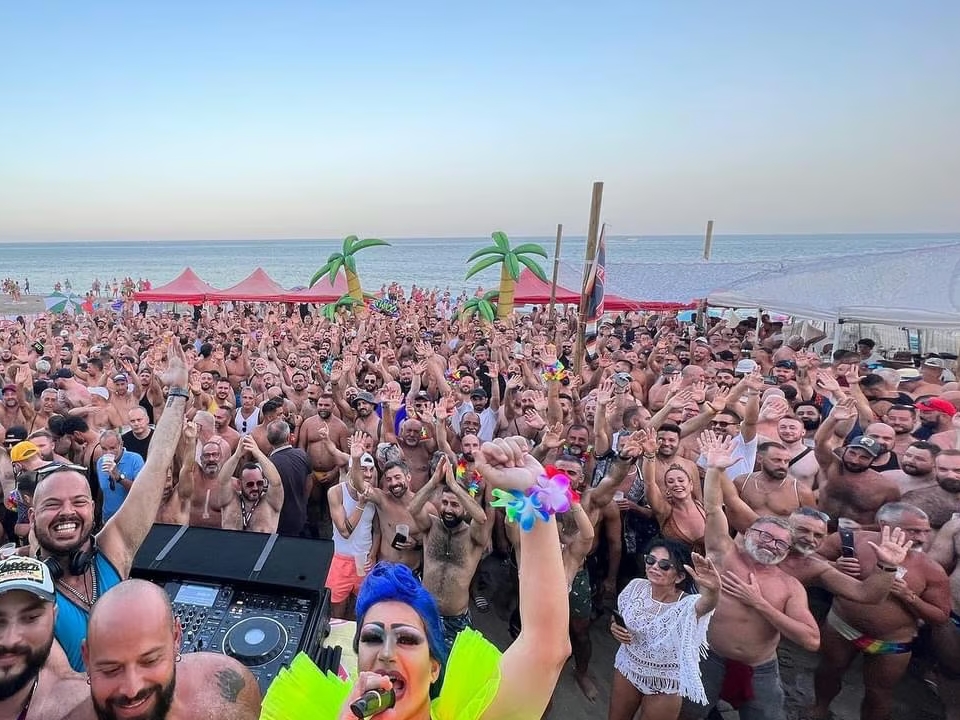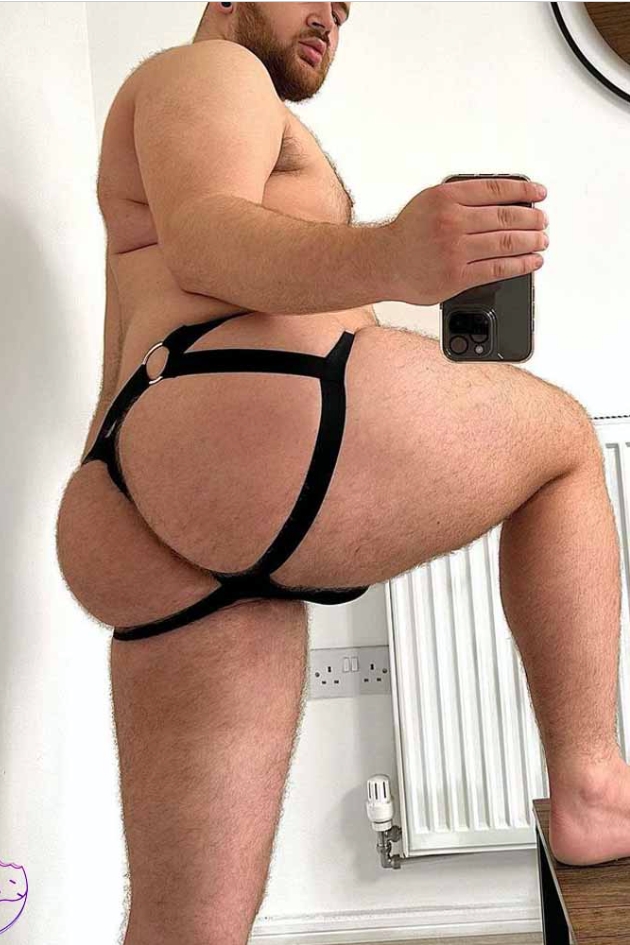The world of Gay Bears is as diverse as it is intriguing. From their distinctive physical features of their vibrant cultural scene, understanding the essence of Gay Bears offers a fascinating glimpse into a thriving community within the LGBTQ+ spectrum.
What is a Bear in the Gay Community?
In gay culture, the term "bear" carries significant weight, representing a diverse and multifaceted subculture within the community. Embracing masculinity in its various forms, bears are often characterized by their larger stature, an abundance of body hair, or both, embodying a rugged and robust aesthetic.
However, the bear concept extends far beyond mere physical attributes; it serves as both an identity and an affiliation, fostering a sense of belonging and camaraderie among its members.
Yet, within bear communities, there exists a nuanced dialogue surrounding the definition of a bear. While some emphasize the importance of projecting a distinctly masculine image, others champion inclusivity and acceptance of all behavioral types. The ongoing discussion highlights the varied viewpoints present within the bear community, showcasing the diverse range of experiences and identities that enrich its dynamic culture.
Ultimately, whether one identifies as a bear or gravitates toward bear-affiliated spaces, the essence of bear culture lies in its celebration of diversity, camaraderie, and acceptance. In a world where societal norms often dictate conformity, the bear community stands as a beacon of authenticity and inclusivity, welcoming individuals of all backgrounds, shapes, and sizes to embrace their true selves without reservation.
History of Gay Bears

Origins of the term Gay Bear
The term "Gay Bear" originated in the LGBTQ+ community in the late 20th century, although its exact origins remain somewhat ambiguous. Some trace its roots to the emergence of bear-themed publications and events in the 1980s, while others attribute it to the rise of gay leather culture.
Evolution of the Gay Bear identity
- Early Notions of Masculinity (1960s-1970s)
The concept of the bear in the gay community begins to emerge, influenced by societal norms of masculinity prevalent during the mid-20th century; Initial gatherings and social events among larger, hairier gay men lay the groundwork for what would later become the bear community.
- Emergence of the Term "Bear" (1980s)
The term "bear" has gained popularity within the gay subculture, particularly in urban centers like San Francisco and New York City; Bears start to self-identify as a distinct subgroup, celebrating their physical attributes and rejecting mainstream gay culture's emphasis on slimness and youthfulness.
- Formation of Bear Communities (1990s)
Dedicated bear clubs, bars, and social groups begin to form, providing spaces for bears to socialize, connect, and celebrate their identities; Bear-themed events, such as Bear Runs and Bear Pride festivals, become established, attracting bears and bear admirers from around the world.
- Online Presence and Global Reach (2000s)
The rise of the internet has led to the proliferation of online bear communities, forums, and dating platforms, facilitating connections among bears regardless of geographical location; Bear culture becomes more visible and accessible to a broader audience, fostering a sense of belonging among individuals who may not have access to physical bear-centric spaces.
- Diversification and Inclusivity (2010s-present)
The definition of what constitutes a bear expands to include a wider range of body types, identities, and expressions of masculinity; Within the bear community, subcategories like muscle bears, otters, and cubs emerge, underscoring the diversity and depth of bear identity.
Efforts to combat discrimination and promote inclusivity within the bear community continue, with an emphasis on embracing all members regardless of age, race, or body type.
Over the years, the Gay Bear identity has evolved beyond its initial connotations to encompass a broader spectrum of individuals who identify with its ethos of body positivity and inclusivity. Today, the term encompasses a diverse range of people, including those who may not fit traditional stereotypes but align with the community's values.
Gay Bear Culture
At the heart of Gay Bear culture lies a vibrant social scene characterized by camaraderie, friendship, and solidarity. Social gatherings and events play a crucial role in fostering connections and building a sense of belonging within the community.
Social gatherings and events

From bear runs and bar nights to picnics and camping trips, Gay Bears come together to celebrate their shared identity and interests. These events serve as platforms for networking, socializing, and cultivating long-lasting friendships within the community.
Noteworthy gatherings include the Mad Bear festival based in Madrid, Sitges Bear Week scheduled for September, Brighton Bear Weekend set in June, and Bearsurrection situated in Fort Lauderdale, among numerous others.
Online communities and forums
In addition to in-person gatherings, online communities and forums serve as virtual hubs for Gay Bears to connect, share resources, and offer support. Platforms such as bear-centric websites, social media groups, and dating apps provide avenues for interaction and engagement, bridging geographical barriers and fostering global solidarity.
Bear-themed media and entertainment

The rise of bear-themed media and entertainment has played a pivotal role in shaping Gay Bear culture and identity. From bear-themed movies and TV shows to bear-centric publications and artwork, these cultural artifacts celebrate the diversity and resilience of the community, offering representation and validation to individuals who may feel marginalized or overlooked.
Movies that portray the bear community include BearCity, BearCity 2: The Proposal, and Cachorro, as well as the humorous web series Where the Bears Are, BULK: The Series, and Skeleton Crew. Furthermore, there exists a publication known as Bear World magazine, which has evolved into the premier bear lifestyle magazine worldwide, becoming a popular online news and magazine portal over the years.
Gay Bear Slang Terms
Bear subculture also has their own slang, here are some of them:
Big Boy
Within the lexicon of the bear community, this Afrocentric expression serves as a loving descriptor for bears, particularly those with roots in Africa or the African American community. It highlights the inclusivity of bear culture, embracing individuals from diverse racial backgrounds and celebrating their unique identities.
Chub
A term used to describe heavy-set men who may be considered overweight or obese. Chubs form a distinct subculture within the gay community, characterized by their larger physique and jovial demeanor. Some chubs may identify with the bear movement, while others may not.
Cub
Often referred to as a younger or younger-looking bear, a cub typically possesses a smaller frame compared to other bears. While not exclusively defined by age, cubs exude youthful energy and playfulness within the bear community.
Otter
Regarded as a variant of the bear by certain circles, an otter typically refers to a man with a lean or petite build who sports a conspicuous covering of body hair. Otters embody a unique blend of rugged masculinity and slender physique, adding diversity to the bear community.
Panda (or Panda bear)
This term affectionately describes bears of Asian or Pacific Islander descent, highlighting the cultural diversity within the bear community. Pandas contribute to the rich tapestry of bear culture, bringing their own unique perspectives and experiences to the forefront.
Polar bear
An endearing term used to describe older bears whose facial and body hair is predominantly or entirely white or grey. Polar bears exude wisdom and maturity, serving as respected figures within the bear community.
Trans bear
This term refers to transgender individuals, typically trans men or those with transmasculine experience, who embody the characteristics of bears. Trans bears challenge traditional notions of gender and identity, enriching the tapestry of bear culture with their diverse experiences.
Ursula
A playful term used to describe lesbian bears, highlighting the presence of women within the bear community. Ursulas embrace their own unique brand of bear culture, fostering camaraderie and inclusivity among all members.
Wolf
This term describes gay men with body and facial hair who possess a lean, muscular, and athletic build. Wolves embody a rugged and primal energy within the bear community, adding dynamism and diversity to its ranks.








